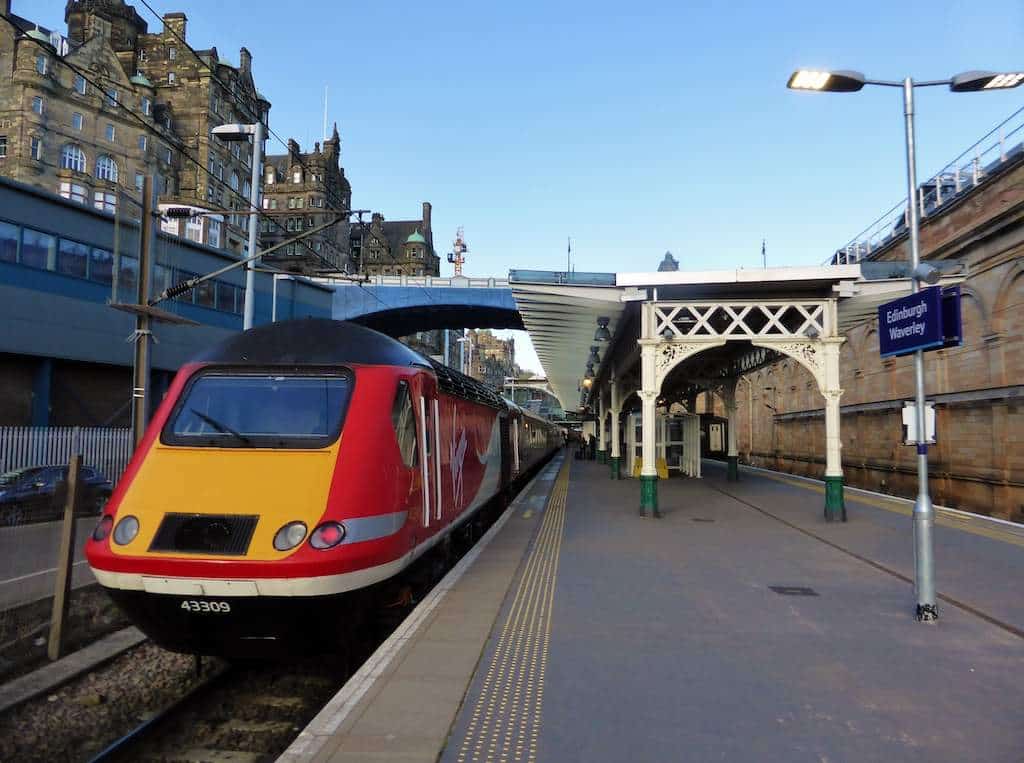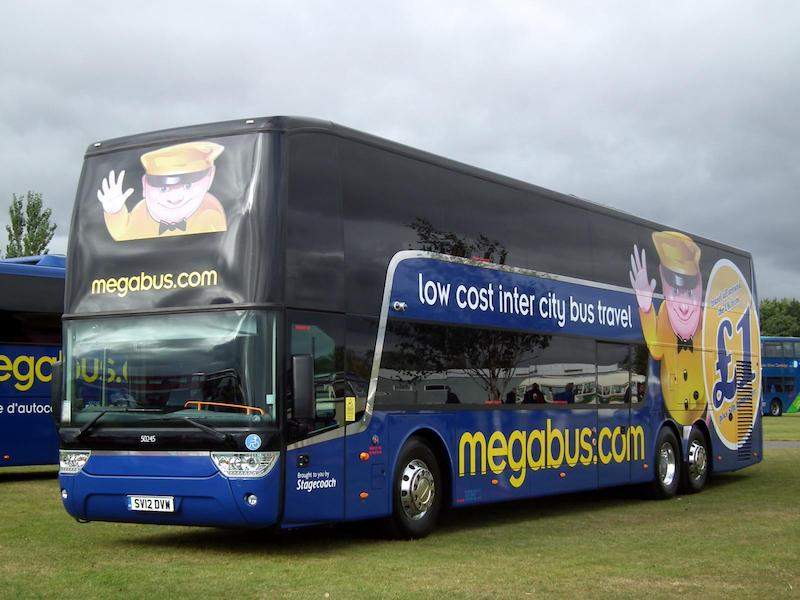A jaunt between London and Edinburgh is full of historical richness, rich vibrancy of culture, and breathtaking sceneries. Viewed from another perspective, the journey between the two iconic cities projects a feel of being right at the heart of the United Kingdom—from the hustling, bustling streets of London all the way up to the historic charm of Edinburgh. Budget travelers will find it not only possible but very thrilling to take on such a journey without spending too much of their hard-earned cash. The tips and strategies that will be expounded on in this guide are the practical ways to save one money on a London-to-Edinburgh kind of adventure while ensuring one enjoys the journey without their wallet on his or her mind.
Transportation Options & Cost Considerations
Train Travel
Highlight: A train is a comfortable, scenic way to travel.
These include railways between London and Edinburgh that pass through some of the most picturesque landscapes in the country. For instance, you will run through rolling countryside and pretty villages, and along the stunning east coast in this route. Trains are comfortable with enough legroom, on-board amenities like Wi-Fi and food service, and the freedom to walk about freely.
Cost Factors:
Advance Booking:
Probably the best method of saving is to book your train tickets well in advance. As a general rule, the best time to buy train tickets is about 12 weeks in advance of your travel date. This allows the train operators to offer tickets at their cheapest rates on sale before prices shoot up rapidly nearer to the date of departure. For example, a standard class ticket booked three months in advance may cost only about £30-£40, but that same ticket purchased on the day of travel might cost upwards of £100. Websites like Trainline and National Rail Enquiries will allow you to book tickets and see price trends.
Off-Peak Travel:
You can save a lot by traveling off-peak. Generally speaking, off-peak times refer to times outside working commuter periods: any time after 9:30 AM on weekdays and weekends but excluding peak hours. Off-peak tickets are cheaper, and one can look forward to fewer passengers and more relaxed travel. For instance, an off-peak return can be a massive 40% cheaper than the same journey at peak time. Off-peak tickets are therefore very useful to people who have flexible time and can avoid traveling in the busiest times.
Railcards:
A Railcard can save people a significant amount on rail fares. There are various kinds of Railcards available that cater to different age groups and other needs. For example, a 16-25 Railcard is £30 a year and gives a third off most rail fares. Similarly, a Senior Railcard offers the same savings for passengers 60 and above. Further options include the Family & Friends Railcard and the Two Together Railcard. Cards pay for themselves after a few outings and can be bought online or at railway stations. Further details are on the Railcard website.
Coach Travel
Highlight: Coaches provide a potentially cheaper option.
For travelers with strict budgets, coaches offer another means of traveling from London to Edinburgh. Again, services are available from companies like National Express and Megabus between the two cities, usually for a fraction of the price of train travel.
Cost Considerations:
Journey Time:
One of the major trade-offs with coach travel is the significant addition of time it takes. Your standard London-to-Edinburgh coach trip can take anywhere from 8-10 hours, with the train ride taking in a vicinity of 4-5 hours. Although this extended period of travel time may be a pain for some, this is surely a sacrifice budget travelers can make easily. Coaches often have overnight services that enable you to save on accommodation costs by traveling while you sleep.
Comfort and Amenities:
Coaches mostly have fewer amenities and less comfort compared to trains. It can be hard to bear long journeys in coaches with limited legroom, fewer food choices, and the inability to stretch about. However, most of the modern coaches often come equipped with today’s demanded amenities such as Wi-Fi, power outlets, and onboard restrooms, which could help make the journey more endurable. One has to balance these comfort considerations against the cost savings when deciding between train and coach travel.
Comparison Table: Train vs. Coach Travel
| Factor | Train | Coach |
|---|---|---|
| Travel Time | 4-5 hours | 8-10 hours |
| Cost | Higher (with potential savings) | Lower |
| Comfort | More comfortable | Less comfortable |
| Amenities | More amenities (e.g., Wi-Fi, food) | Fewer amenities |
Alternative Modes
Carpooling or Ridesharing:
For flexible travelers, looking for alternative modes of transport, carpooling or ridesharing are some cheap options. In this respect, BlaBlaCar is one such platform through which drivers and passengers going to the same destination are connected. This could greatly reduce the travel cost by sharing the expenses related to fuel and tolls with fellow passengers. Further, through ridesharing, one can make new friends and feel personalized while traveling.
Travel Cost and Time Comparison
Comparing the cost and travel time to your budget and schedule, you should consider carpooling or ridesharing. This mode of travel could be less expensive, but the travel time varies depending on the traffic condition and the driver’s preference for the routes. It, however mostly offers value for money and convenience, particularly for those who want a flexible travel arrangement.
Strategies to Plan & Book
Travel Dates & Flexibility
Shoulder Seasons:
Fares will be more affordable during shoulder seasons, spring—March to May—and autumn—September to November. Since the demand for traveling is smaller, ticket prices fall. These fares can even drop by a whopping 30 percent during these seasons. Also, in the shoulder seasons, you get to see places with easier weather and less crowding at the famous tourist spots.
Midweek Travel:
Traveling midweek—especially Tuesdays, Wednesdays, and Thursdays—also tends to result in less expensive tickets. Train companies commonly charge lower fares during these times in an attempt to fill the seats during those periods that are less busy. If you arrange your journey to avoid the stressful weekend or Monday/Friday rush, you will undoubtedly be able to take advantage of these reduced prices and have a much more hassled-free ride.
Finding Deals & Discounts
Email Newsletters:
Get the email newsletters of train companies and coach operators in order to come across some exclusive deals or promotions. Newsletters very often have embedded discount codes or some special offers that cannot be otherwise found. National Express itself, for instance, offers promotional fares to subscribers quite frequently, so it is worth joining their mailing list.
Social Media:
You can also find some holiday companies on Facebook, Twitter, or Instagram to obtain even more offers. Those companies majorly advertise their flash sales, limited-time offers, and last-minute deals only on their social media pages. Therefore, keeping an eye on these channels will help you get great deals you might not be able to spot otherwise.
National Rail Enquiries:
It’s a handy National Rail Enquiries website for journey planning and seeking value. Their “cheap fare finder” tool will allow you to find the cheapest fare available for your dates of travel. Service Alterations, Changes to the Timetable, and Station Facilities are also located on this site, which ensures you are prepared for your journey.
Saving on the Journey Itself
Food & Drinks
Packing Meals:
Bring along your lunch and snacks to avoid onboard meal expenses. Sandwiches, fruits, and granola bars are so easy to pack and travel-friendly. In addition to saving you money, packing your food will help you eat more healthily with choices tailored to your dietary preference.
Reusable Water Bottles:
Most trains have water refill stations, so you can bring your nice, stainless steel, refillable water bottle to stay hydrated without buying bottled water. Again, in addition to saving money, you would cut plastic waste for a more sustainable style of travel.
Luggage
Packing Light:
Pack smart and bring less to avoid extra baggage fees. You might also want to use packing cubes to get your stuff organized and compressed. This will do more than help you pack the optimal amount. It will make what you need on your way easy to find.
Sending Luggage Ahead:
Where possible, shipping your luggage in advance could be a good alternative. Services like Send My Bag will send your bags on to your destination without you having to carry them. This is especially useful for light travelers who nonetheless have big equipment to transport. Be sure to check costs and limitations for sending these bags in advance to ensure that it will fit in your budget.
While a variety of transportation options aid in making your journey from London to Edinburgh economical and memorable, the cost estimate forms only one particular aspect. Be it the more beautiful and scenic ride by train, the cheapest journey through coaches, or any other form of transport, careful planning and smart decision-making will definitely pay off to make you enjoy your travel experience to the fullest with your money.
Conclusion
One can travel from London to Edinburgh on a budget if one is armed with the right strategies. With a little smart choice, through means of the most economic travel, mindful planning, and strategic booking, both the journey and the destination, London and Edinburgh, respectively, can be promised with richness of experience without the pocket getting overstretched. These are the ways one can travel between London and Edinburgh. Be prepared in advance for your budget-sensitive trip, but also be flexible and confident. The beauty of these historic towns is bound to get into you, to explore and uncover, all the while keeping your budget intact. Bon voyage!






No Comment